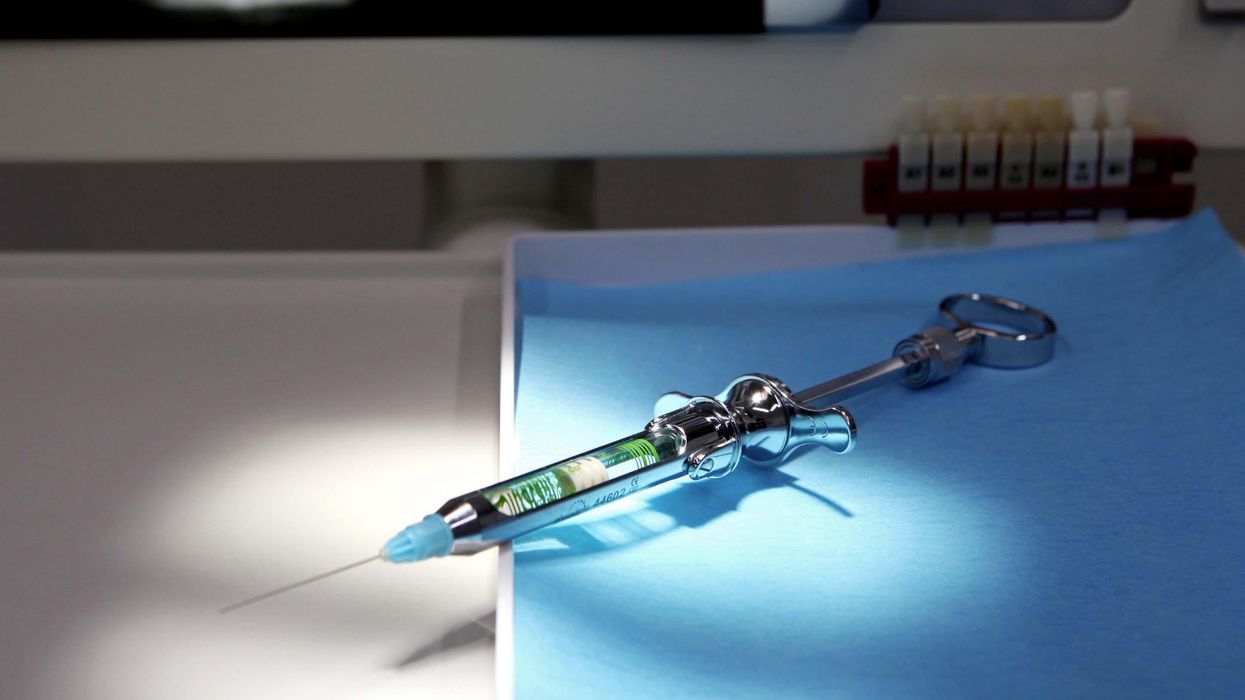Is It Time to Start Taking Scalp Shots?
Experts explain exactly what PRP is and how it can be used as a hair loss treatment.

Our hair is like a mirror; good or bad, hair health can be a vivid reflection of where we are and how we’re actually doing. But in the pandemic’s nascent stages, I was certain that this wouldn’t be the case for me. No matter how stressful our circumstances became, I was determined that my extra time at home would not be for naught. I figured that with more time at home to do hair masks, I had no excuse not to emerge from the pandemic with luscious curls at peak performance. I didn’t get so lucky. For every surge, new lockdown, and harrowing episode of The Daily, I was pulling out clumps of hair in the shower (hot!!!) and not even protective styles could slow things down. Thus began my Google spiral looking into platelet-rich plasma (PRP) injections.
Basically, PRP is a three-step restoration method where your blood is drawn out, platelet-rich plasma is spun and extracted in a centrifuge, then injected back into your scalp. There, the increased blood supply promotes hair growth.
It’s worth mentioning that my hair loss wasn’t COVID-induced (although that has been noted as a long term symptom), it was purely mental. Whistler-based board-certified dermatologist Dr. Jeff Donovan let me know that this type of hair loss falls into the telogen effluvium category. “This is a temporary type of hair loss and causes the patient to experience increased daily hair shedding. Once the stress levels diminish, hair grows back on its own even without treatment. The body can regrow the hair all on its own provided the trigger, like stress, is removed.”
But what’s going on at strand-level? According to board-certified N.Y.C. dermatologist Dr. Michele Green, this type of hair loss takes place when stress causes our hair to go to the resting phase of its lifecycle—this is why hair tends to look lifeless before it falls out. “In telogen effluvium,” she explains, “a significant amount of hair enters the resting phase simultaneously. This can cause excessive hair loss and hair thinning.”
As a hair treatment, PRP is one of the least invasive, most effective available and with the stress of everything taking a toll on our hair, this will undoubtedly be a year where scalps and syringes have more contact than ever before. Below, we unloaded all of our most pressing PRP questions on Dr. Donovan and Dr. Green.
How soon after noticing hair loss should I see a dermatologist?
“If hair loss persists for more than 3-4 months or is happening in very specific areas of the scalp rather than all over equally then it is important to see a specialist,” Dr. Donovan advises. “There are dozens and dozens of reasons to lose hair and one needs an expert assessment if something doesn’t seem right.” With that being said, he says that you should call your derm immediately if hair loss is accompanied by excessive itchiness, burning, and pain or if it’s affecting your brows, lashes and body hair.
What makes someone a good candidate for PRP injections?
The ideal PRP candidate experiences excessive shedding, but not balding, says Dr. Green. The procedure is most effective when the patient still has hair follicles intact. “While it can combat early signs of male or female pattern baldness, patients with excessive balding are not the ideal PRP candidates,” she explains.
While it’s safe for most patients, Dr. Green says that PRP is not an ideal choice if you have any blood or platelet disorders or if you’re taking steroids or blood thinners. She also doesn’t recommend PRP for pregnant patients.
Is the process painful?
While there may be some discomfort (it’s an injection after all), it’s typically mild, says Dr. Donovan. “It is very tolerable,” Dr. Green adds. “A topical anesthetic can be applied to the scalp before the procedure in order to minimize any minor discomfort that may be caused by the injections.”
Does my hair type matter?
“The texture of hair will not have an impact on your PRP treatment results,” says Dr. Green. Since the curl pattern and density of your hair won’t impact how effective the injections can be, PRP can be an option for a variety of hair textures — from super straight to coily. “Patients with fine hair and patients with coarse hair can benefit from treatment with PRP,” she adds.
Photo: Ullstein Bild/Getty
Want more stories like this?
Hair Loss And Stress: How They’re Linked, & Ways To Treat It
The Products And Treatments That Actually Work For Thinning Hair
Would You Treat Yourself to a Smaller Forehead?




